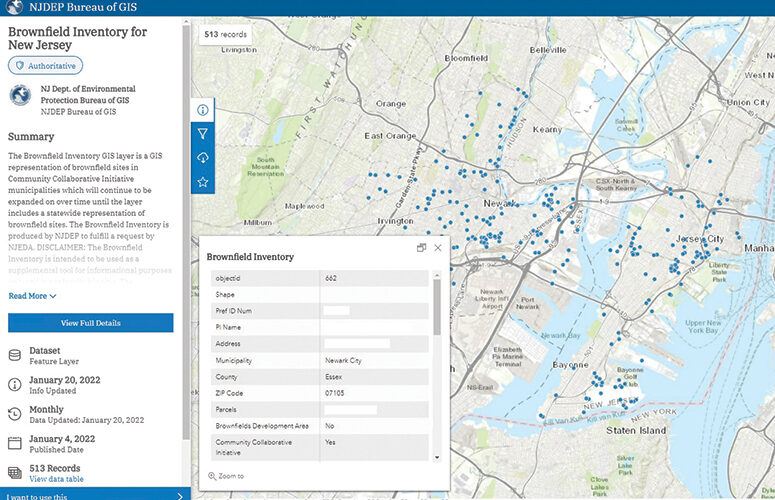
South Jersey Strives for Success
Atlantic City and Camden are ascending toward promising revitalization and growth against the backdrop of a broader, industry-diverse South Jersey region.
By Lisa Goulian Girard, Contributing Writer On Sep 12, 2016Atlantic City, once known as “America’s Playground,” has suffered a much-publicized decline in the last decade. Shuttered casinos and retail shops remind visitors of a gaming industry diminished by the both the recession of 2007-2009 and new gambling options in surrounding states.
On the other side of Southern New Jersey sits Camden, which has repeatedly been named America’s most dangerous city, and this year topped the Economic Innovation Group’s national list of the most economically distressed regions based on high levels of unemployment, poverty and fiscal anxiety. Camden’s 1,895 violent crimes in 2014 equal an average of 25.66 per 1,000 residents, which is six times higher than the national average.
While such statistics are daunting, both of these major South Jersey cities appear poised to turn things around, thanks to help from government agencies, business developers, civic organizations, and public universities bent on bringing economic and cultural revival to the region. For Atlantic City, the idea is to create an economy less reliant on gaming and more on family entertainment, while Camden is playing up its waterfront area and improving infrastructure. The hope is that such measures will not only improve the economy and quality of life in these two cities, but will have a ripple effect throughout Southern New Jersey.
Leading the charge is the state’s Economic Opportunity Act of 2013, which led to the Economic Redevelopment and Growth Program (ERG) and the Grow NJ job creation and retention program. So far, 198 active projects have been approved for a total award amount of nearly $3.6 billion under Grow NJ, with nearly 43 percent of these projects based in Southern New Jersey. “The Economic Opportunity Act was expressly designed to drive growth in areas of the state that had long suffered from disinvestment,” says Melissa Orsen, chief executive officer of the New Jersey Economic Development Authority (NJEDA). “The distinct benefits afforded to Garden State Growth Zones under the Act – and specifically to Camden and Atlantic City – are effectively working, as illustrated by the unprecedented level of corporate interest in the City of Camden. As Camden continues its renaissance, we are encouraged by the momentum building in Atlantic City and other areas throughout Southern New Jersey.”
AC Is Not Just About Gambling Anymore
Atlantic City has gone through many changes in its 162-year history. A family resort town early on, it was a hotbed of drinking and gambling during Prohibition and has been the primary host to the Miss America pageant since 1920. Republican Presidential candidate Donald Trump has been closely tied to the ups and downs of gambling and Las Vegas-style entertainment in Atlantic City since the 1980s, while his Democratic opponent, Hillary Clinton, delivered a speech on the boardwalk in July that alluded to it as a city built on the efforts of small business owners pursuing the American Dream.
“I look at it as an evolution. All great cities must change; if not, they don’t survive,” says Chris Paladino, president of ACDevco, a private nonprofit urban real estate development company at the helm of the AC Gateway project. “A city can become single-point vulnerable – like Atlantic City with gambling or Rochester (New York) with Kodak – and during the last growth spurt, Atlantic City became overly dependent on gaming.”
To reverse this trend and reposition Atlantic City as not only a gambling mecca, but a place for families, the city is embracing the theme park model of bringing in a new attraction every year and divesting itself from those gambling-centric years. These include the Polercoaster, a vertical roller coaster to be built on the site of the old Sands casino, as well as a 220-foot observation wheel at Steel Pier with 40 climate-controlled gondolas. The Showboat is up and running again – with no casino, at least for now – and Revel is also interested in reopening with a new focus.
“Atlantic City was originally founded as a family resort destination, and we see that coming back,” says James Wood, president and CEO of Meet AC, the sales and marketing force that supports the Atlantic City Convention Center. “Gaming is still lucrative, but other cities are looking to take a bite out of that apple, so we’re trying to treat gaming as more of an amenity.”
In fact, when Pennsylvania opened its first casino in 2006, Atlantic City’s gaming revenues were at their peak of $5.22 billion. Nine years of steady losses saw that number fall to $2.56 billion in 2015, and the prospect of casinos opening in North Jersey and Manhattan may spark a further decline.
Another boost to Atlantic City is the AC Gateway project, which comprises a new Stockton University campus, South Jersey Gas’s corporate headquarters, an 886-space parking garage, and 20,000 square feet of retail space, and is expected to open by the fall of 2018. According to Paladino, it will bring about 1,500 people to the intersection of Atlantic and Albany avenues every day, which is a step toward Atlantic City becoming a 12-month, 24-hour-a-day city with a more diverse population. Paladino also gives a nod to the Atlantic County government – and Chief of Staff Howard Kyle, in particular – and efforts to cultivate high-tech jobs in aerospace engineering and computer science in the region through the Atlantic County Economic Development Alliance.
“I think most of us are very enthusiastic about the possibility of Atlantic City going through a renaissance in the next couple of years, and we want to be an anchor institution as part of that renaissance,” says Dr. Harvey Kesselman, president of Stockton University, whose new beachfront campus will include a five-story residence hall and 36,000-square-foot classroom building. The redevelopment project will revitalize several parcels that have sat vacant for a number of years and will generate an estimated $1.5 million in tax revenues on land that is currently taxed at $300,000.
“Private investors are interested in developing properties that provide multiple recreational activities so people want to come to the city,” Kesselman says. “Atlantic City is bustling again, and though there are still issues with budgeting, there are successful individuals and companies investing in the city and treating it like the jewel it is.”
Focus on Camden
Across the state, Camden also continues to be a work in progress, supported by government initiatives like the Economic Recovery Board (ERB)’s $60 million in approved project financing for at least 21 projects – efforts that have also attracted over $1 billion in private investments. The ERB is working to improve infrastructure, with more than 1,750 homes under development and more than 1,700 expected new jobs.
Meanwhile, Liberty Property Trust – developer of Philadelphia’s Comcast Center – announced plans last year to transform the Camden Waterfront, which already boasts attractions like BB&T Pavilion, Adventure Aquarium, Battleship New Jersey, Camden Children’s Garden, and Wiggins Park Marina. Ground is set to break next month on the developer’s $800-million project, which will include a new ferry stop, shuttle service to downtown, new office buildings and sidewalks, and expanses of green space by the river. In addition, American Water Works announced in July that it was shifting the location of its new $1-billion headquarters from the Gateway District to Camden’s waterfront area – news that generated some headlines at the Democratic National Convention and prompted Camden Mayor Dana Redd to say, “When Camden does well, the region does well.”
Rutgers University-Camden has become a sparkplug for growth and change in the area, working with the city and state to strengthen opportunities for children grades K-12, and making sure young Camden residents are prepared to go on to college or engage in a trade. The city is also rich with opportunities for faculty members – including scientists, biologists and business professors – to do research on issues of urban life, engage students in that research and have an impact on the community.
“South Jersey is an incredibly diverse region,” says Michael Sepanic, Rutgers-Camden’s associate chancellor for external relations, whose office looks out at Philadelphia and is just a brisk 20-minute walk from that city. “Geographically, there’s a fair amount of space, and it runs the gamut from inner city urban life, to farms, to suburbia to outright wilderness, to shoreline. With all that comes a diverse population and economic realities. The challenges and opportunities here are the same ones confronting the entire nation.”
Rutgers-Camden recently unveiled an Alumni House and other renovated sites on Cooper Street, a thoroughfare leading to the Camden Waterfront. And most significantly, the university plans a spring 2017 opening of the Rutgers Nursing and Science Building, a $62.5-million research and teaching facility that will educate more than 1,000 nursing and PhD students and connects to Cooper University Hospital, a teaching hospital and biomedical research facility. “It’s important to become part of a deliberate strategy to build an educational and medical corridor between Rutgers-Camden and Cooper Hospital,” Sepanic says. “That corridor is bringing more people back and forth, there will be more opportunity to build up retail businesses, and more opportunity to build a level of buzz right in the heart of Camden.”
Cooper itself has been bringing more people into Camden over the last decade, including patients, medical workers and other healthcare providers. A major expansion has included creation of the MD Anderson Cancer Center, Cooper Medical School of Rowan University, several new inpatient units, and an operating room addition, with the hospital currently finalizing plans for another major expansion. “As Cooper goes, there’s a lot of activity, and we’re also looking at a strategy to provide care within communities across South Jersey and Camden,” says Adrienne Kirby, CEO of Cooper University Health Care.
Cooper – along with Rutgers-Camden and Rowan University – is part of the Camden Higher Education and Healthcare Task Force’s “Eds and Meds,” whose 2014 study reported an economic impact of close to $2 billion from Camden’s educational and medical communities, which account for 40 percent of jobs in the city. Cooper is also working with Camden higher education to create new career pathways for Camden residents. One example is identifying high-performing students and directing them into medical assistant training and medical coding programs – which will create higher-paying jobs within three years.
“I think we all believe collaboration is essential to making this city great again; to that point, we’re continuing to grow, Rutgers and Rowan are growing, and eds and meds are continuing to create jobs and growth and bring people into the city,” Kirby says. “We’re seeing the participation of developers who are interested in driving that kind of growth as well as long-time members of the community who are willing to participate, and the synergy of everyone working together is creating the momentum in Camden.”
About 20 miles east of Philadelphia, in the medium-sized municipality of Glassboro, Rowan University is also stepping up its efforts to improve facilities and attract a more diversified student body. There’s about half-a-billion-dollars worth of construction going on there right now, including: the Holly Pointe Commons Residence Hall; new College of Engineering and College of Business buildings that will allow Rowan to double enrollment in those majors; expansion of the Camden Academic Center, which will double enrollment at the Camden campus; a $350-million, mixed-use redevelopment project on Rowan Blvd.; and the Rowan/Rutgers-Camden Joint Health Sciences Center.
Six years ago, at least 65 percent of Rowan students were from South Jersey; now more than 65 percent come from North and Central New Jersey. Five years ago, there was no medical school at Rowan; now there are two medical schools, in addition to long-standing engineering, business and science schools. Overall enrollment has increased by nearly 6,000 in five years, and SAT scores for incoming freshman have increased by 100 points in the last five years.
“We are becoming much more selective while accepting more students, hiring great faculty, and everything is moving up as a result,” says University President Dr. Ali Asghar Houshmand. “Locally, more students means more money being spent in the community, as they need to get a haircut, and go to restaurants and to the movies – all of which creates business opportunities. If you came to Glassboro 10 years ago, you would have seen only two to three different businesses in the area that were there as a result of the university. Now we’re surrounded by businesses there to cater to students because investors know they have a captive audience.”
Among those businesses increasing their stake in the area is M&T Bank, whose Cherry Hill office has expanded from 11 to 26 employees since opening two years ago. “Our presence in Cherry Hill has served as our entry into the South Jersey market,” says Ira Brown, president of the Philadelphia region for M&T Bank. “Since then, we have expanded from the basic core businesses of wealth, commercial and business banking to private banking, residential mortgage, treasury management and estate planning, with a strong commitment to South Jersey.”
With the acquisition of Hudson City Savings Bank earlier this year, M&T Bank now has three branches in Camden County (two in Cherry Hill and one in Haddonfield), and is assessing how to grow in Pennsauken, Atlantic City, Vineland and Millville. The company is also trying to grow home ownership by securing loans in low to moderate income areas throughout Camden and Atlantic City.
“At a time of bank turnover and market disruption in South Jersey, we do believe that our community oriented banking and commitment to neighborhoods differentiates us from banks large and small,” Brown says. “That’s why we’ve more than doubled our staff in South Jersey over the last two years, with the mission of building out a community bank.”
Vineland, the birthplace of Welch’s Fruit Juice and home to one of the nation’s oldest and still active food auctions, serves as a microcosm of what’s been happening in the entire region. With help from the state of New Jersey, the City of Vineland Economic Development Department has been helping companies, site selectors, brokers, corporate real estate executives, and entrepreneurs through the Urban Enterprise Zone loan fund, which has resulted in new growth opportunities and jobs for its residents. Not that there haven’t been setbacks. In late July, General Mills closed its Progresso Soup plant in Vineland without warning as part of an effort to restructure its global supply chain. In general, however, businesses have been expanding, particularly in the areas of food processing, food storage and scientific glassware.
“We have a really good relationship with the state; it brings leads down and we piggyback with them,” says Sandy Forosisky, director of Economic Development for the City of Vineland. “Like much of South Jersey, we have a competitive advantage with the price of land, electric rates, and labor rates. The opportunity here is very attractive to many businesses.”
Related Articles:






